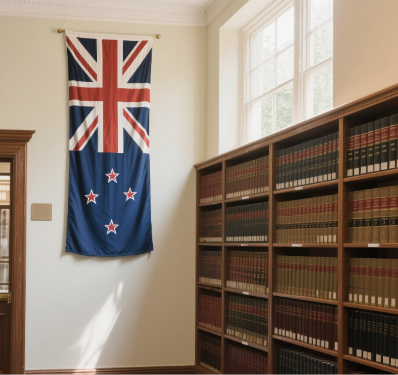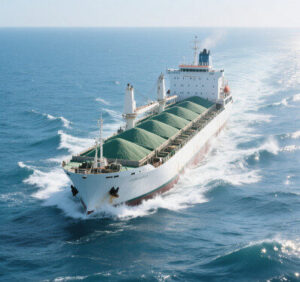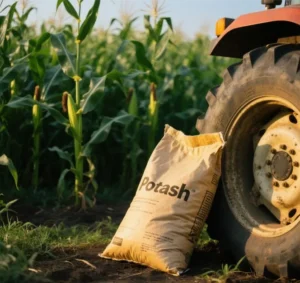Thailand and Pakistan present significant opportunities for global fertilizer manufacturers, traders and investors targeting South and Southeast Asia. Both countries are major importers with farmer subsidy schemes, but their regulatory frameworks differ significantly. While Pakistan’s system is provincially devolved and brand-centric, Thailand operates a centrally controlled product licensing model. This guide outlines the key differences and strategic considerations to help you navigate these markets effectively.
1. Legal Architecture: Governance structures:
- Pakistan: It is governed by the Fertilizer Control Act 1999 and the Agricultural Pesticides Rules 1973, with provincial overlays (e.g. the Punjab Fertilizer Act 2018). Each province sets its own fees, protocols and penalties. Although federal registration is required, enforcement occurs at the provincial level. For instance, Punjab enforces a rigorous two-year renewal cycle, whereas Sindh extends registrations for three years, reflecting regional administrative disparities. This decentralized system can lead to higher compliance costs for enterprises operating across provinces, as they must navigate varying regulations. It may also influence market strategies, as companies may favor regions with more lenient rules.
- Thailand: Centralized under the Fertilizer Act B.E. 2518 (1975) and the Department of Agriculture (DOA). There are no provincial variations. Additional oversight includes the Biosafety Act and the Consumer Protection Act for labeling GMOs. A recent memorandum for 2025 tightened cross-checks between the DOA and customs databases, reducing loopholes for grey-market entry. This centralized structure simplifies compliance for businesses, reducing costs and enabling more consistent market strategies. Tighter regulations on labeling and grey-market entry ensure product quality and protect consumer trust in the market.
2. Product Approval Processes
| Stage | Pakistan (2025) | Thailand (2025) |
| Site/Legal Entity | Province-specific “Plant Registration” with Dept. of Plant Protection. | DOA-issued manufacturing/import licence (3-yr/1-yr). |
| Product Registration | “Brand Registration” per SKU, province-by-province (separate files for Punjab/Sindh). | Nationwide “formula approval” per SKU. |
| Renewal | 2-3 years (province-dependent). | 6-year formula approval; 1-year import licence. |
| Change Control | Label/nutrient changes require new brand application. | Minor variations (≤10% nutrient change) allowed without new approval. |
3. Technical requirements:
l Pakistan:
- Nutrient levels must match the registered formula within ±0.5%.
- Heavy metals: Cd ≤5 mg/kg (PSQCA 2013).
- There is no minimum NPK sum, but the 2025 draft amendments propose limits aligned with the EU.
l Thailand (21/3 Rule):
- N + P₂O₅ + K₂O ≥ 21%, with each macronutrient ≥ 3% or 0%.
- Organic: C:N 15–25; moisture content ≤25%; heavy metals (As 25 mg/kg, Cd 5 mg/kg, Pb 50 mg/kg, Hg 2 mg/kg).
- Bio-fertilizers must contain ≥10⁸ viable cells/g and be free of Salmonella and Shigella.
- The proposed update for 2026 may increase the NPK sum to 24%.
4. Import procedures and timelines
l Pakistan:
- Pre-shipment: No pre-registration is required.
- At the port: Bill of lading, packing list, PSI certificate (if via Qasim) and provincial release order.
- Post-clearance: A 30-day sampling period applies and the product may be sealed pending the results.
Key risk: Provincial inspectors can re-sample trucks mid-transit.
l Thailand:
- Pre-shipment: Obtain an annual import licence (no quota for HS 3105).
- Shipside: FEN, COA (lot-specific, 21/3 compliant) and FSC/GMP.
- Upon arrival, 5% random sampling at DOA quarantine.
- Failure: Re-export or destruction within 30 days; blending not permitted.
Tip: Ensure that the COAs precisely match the registered formula to avoid delays.
5. Labeling and language
- Pakistan: English and Urdu or provincial language. Net weight in kg. ‘Registered under the FC Act 1999’ clause. QR codes are optional (pilot scheme in Punjab).
- Thailand: Thai is mandatory and English is optional. Import licence number in 12 pt font. Restricted function claims. Bio-fertilizer logo/GM symbol. False ‘organic’ claims carry a fine of THB 200K. Best practice: Prepare dual-language labels in advance to avoid the cost of reprinting.
6. Enforcement and risks
l Pakistan:
- The 2025 budget doubled testing grants and introduced mobile labs at the dealer level.
- Penalties: Up to two years’ imprisonment and a fine of PKR 500,000 for fake or misbranded products.
- Post-flood focus in 2022 on urea quality; expect intensified sampling in winter 2025.
- Mitigation: Maintain relationships with provincial inspectors.
l Thailand:
- 2024: 1,300 border seizures; 70% of Chinese blends failed on 21 March.
- Real-time customs checks against the DOA database (delays if IT is down).
- ‘Grey-channel’ border loopholes persist despite GACC-certified smoother clearances.
- Recommendation: Prioritize GACC certification for faster clearance.
7. Organic and bio segments
Pakistan: There are no separate rules; organic fertilizers are treated as regular brands. The draft 2025 National Organic Standards are aligned with the EU’s 2021 standards (minimum 3% humic acid). Opportunity: Leverage pending EU harmonization to accelerate registration.
Thailand: Stand-alone SCOF approval. Composted manure must reach 55°C for three days (audited logs). Achieve 40% year-on-year growth in 2024 and a potential ‘Organic PLUS’ carbon-credit label by 2026. Strategy: Position as a ‘green premium’ supplier to capture subsidies.
8. Subsidies and Price Dynamics
Pakistan: The federal government implements urea price controls and offers gas subsidies. In order to qualify for the ‘Kisan Package’, imported DAP/NP blends must be pre-registered at provincial level prior to shipment. *Critical step*: Completing provincial registration prior to shipment is essential to qualify for subsidies. In recent years, discussions have taken place regarding the reform of these subsidy policies, which could affect the long-term strategies of companies operating in the country.
Thailand: Since 2016, subsidies for NPK fertilizers have been unavailable. However, the ‘King’s Sufficiency Economy’ programme offers farmers a 50% rebate on organic fertilizers. Foreign suppliers often collaborate with local toll-blenders to access these subsidies. Suggestion: Partnering with Thai blenders can help companies qualify for rebate schemes. Companies should consider shifting subsidy policy trends when planning market entry and expansion strategies in Thailand.
9. Cost and Timeline Benchmarks (USD, 2025 avg.)
| Category | Pakistan | Thailand |
| Registration Fee | $350/province | $220 (formula) |
| Lab Testing | $250 | $300/lot |
| Legal/Proxy | $1,000 | $1,500 |
| Timeline | 8–10 weeks | 10–12 weeks |
10. Future regulatory trends (2025–26)
Pakistan: The proposed ‘Fertilizer Control (Amendment) Bill 2025’ will introduce a single-window online registration system, mutual recognition of GACC/EU certificates, and national metal limits. Impact: Streamlined but potentially stricter quality controls. Opportunities and challenges: Easier registration could attract more foreign investors, but stricter quality standards may require additional investment in technology and quality control.
Thailand: Draft Act No. 7 introduces digital labels (RFID/QR codes), extends import licences to two years and reduces the 21/3 ratio to 24% by 2027. Preparation: Reformulate products now to meet future NPK thresholds. Opportunities and challenges: The extended import licences provide more stability, but the tightened NPK thresholds may force companies to reformulate products, increasing costs and potentially affecting competitiveness.
Strategic takeaways for international players
- Pakistan Priorities:
- Select the launch province wisely (Punjab for speed or Sindh for scale).
- Budget for multi-province registrations and annual renewal costs.
- Build local relationships to navigate inspectorial discretion.
- Thailand Priorities:
- Rigorous validation of formulas against 21/3 rules before production.
- Digitize documentation for real-time customs clearance.
- Invest in organic product development to capture the growing subsidy segment.
- Cross-border best practices:
- Dual-label artwork (Thai stripe + Pakistani panel) to avoid delays.
- Maintain a PKR 1–2M ‘spot-check risk’ reserve in Pakistan.
- Register trademarks simultaneously to deter counterfeiters.
Mastering these regulatory nuances unlocks access to two of Asia’s fastest-growing fertilizer markets. While Thailand demands precision from the outset, Pakistan rewards agility and local adaptation. Strategic planning today will position market players for long-term success in these critical agricultural gateways.









